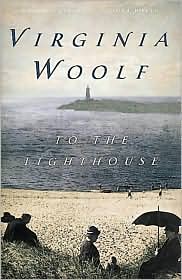
Ever since I read Mrs Dalloway in high school I have loved Woolf's writing. She has an amazing literary stream-of-conciousness style that no other author could imitate and if they tried it wouldn't work.
This book covers the vacation of the Ramsey family to the Isle of Skye, the mother figure Mrs Ramsey according to the introduction was a characterisation of Woolf's own mother, she believes in Victorian ideals, that is, valuing her family and being a good mother to her children, and a good wife to her husband above all else. Lily Briscoe, a younger girl staying in the same beach-house as the Ramseys attracts both Mrs Ramsey's disapproval and sympathy for being single and wholly more interested in her art than anything else (such as family, children or marriage). The fact that Mrs Ramsey is known only as Mrs Ramsey all through the novel helps to put across her family-oriented, idealistic life in comparison to Lily's more artistically and intellectually focused state of being.
Even after Mrs Ramsey's demise, Lily and the Ramseys' children both continue to be influenced by her strict way of thinking and strong opinions towards the life Lily has chosen or had bestowed upon her.
Lily as a character attempts to freeze states of being in her artwork, although she is continually told especially by males that women cannot paint she continues her pursuit of recording time frozen within her artwork. The ending of the remaining children going to the Lighthouse with their father, and Lily painting the scene emphasising each role within the story.
I actually liked this more than Mrs Dalloway although only marginally, if you haven't read any Woolf I strongly suggest you do so!

No comments:
Post a Comment